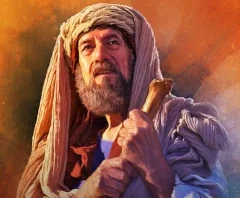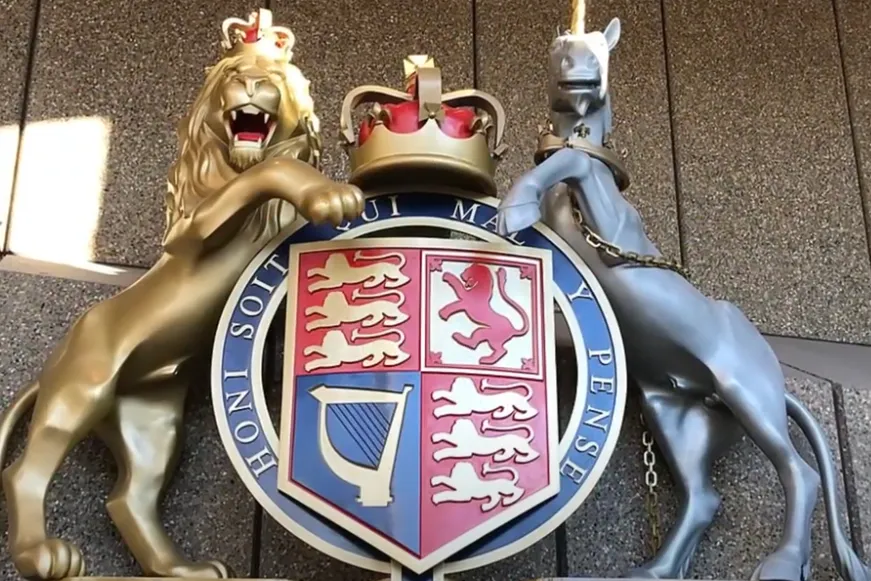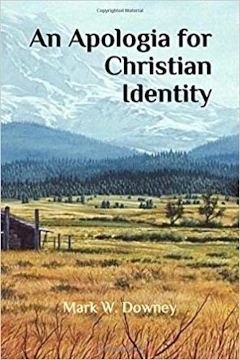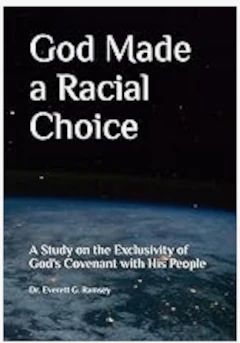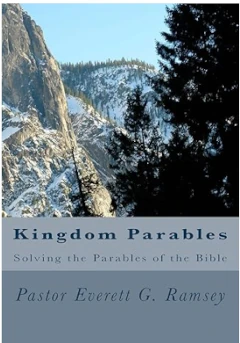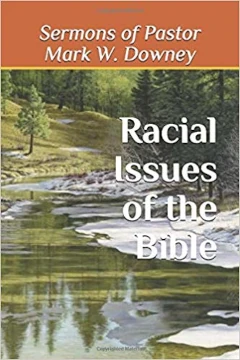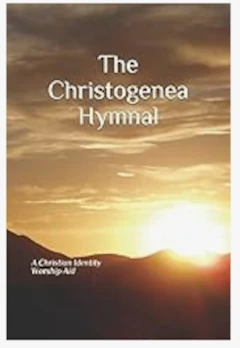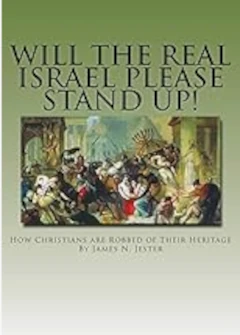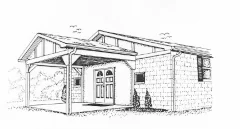Weeping for Tammuz
Copied from the sermon notes of Pastor Don Elmore
November 6, 2022
Scripture Reading: Ezekiel 8:13-14
13) “He [the LORD God of Israel] said also unto me [Ezekiel], Turn thee [Ezekiel] yet again, and thou [Ezekiel] shalt see greater abominations that they [house ofJudah] do.
14) Then He [the LORD God] brought me [Ezekiel] to the door of the gate of the LORD’s house which was toward the north; and, behold, there sat women [of the house of Judah] weeping for Tammuz.”
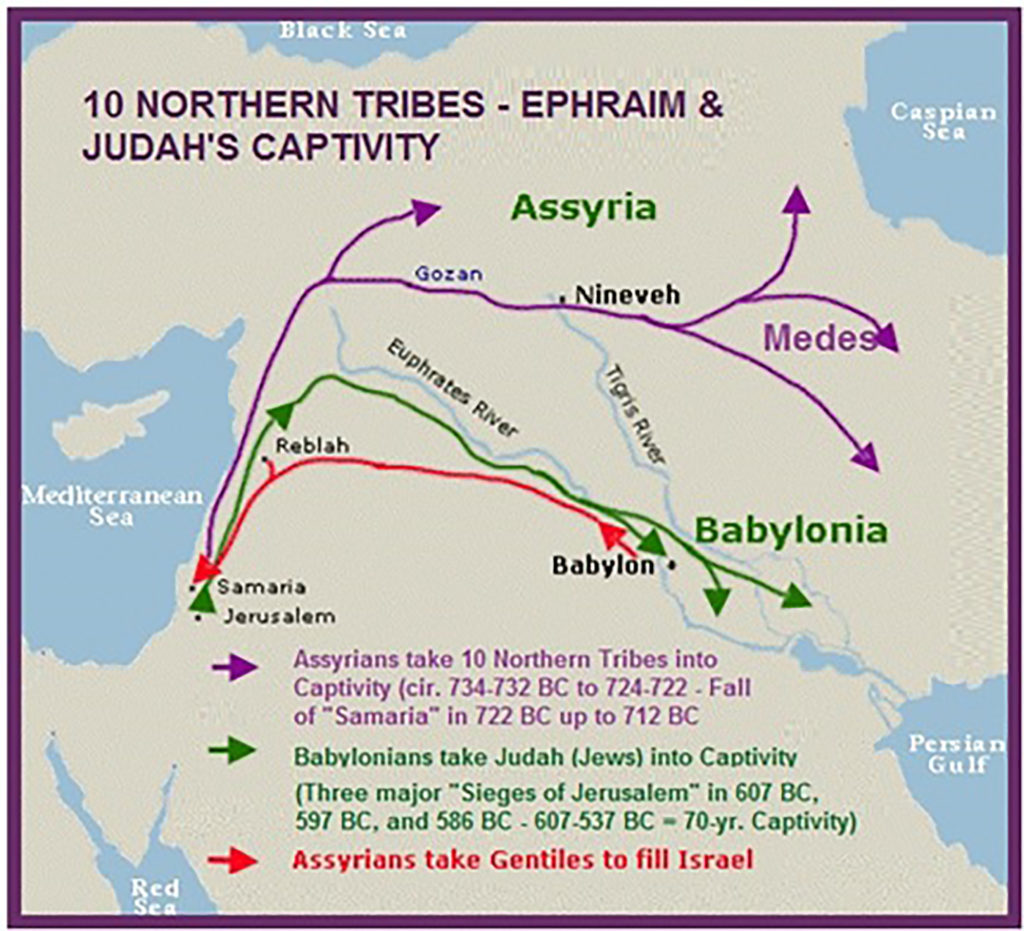 The House of Israel and twenty-two cities of the House of Judah were taken captive by the Assyrians. The House of Israel was given a bill of divorcement from Almighty God. This ten-tribe House of Israel wouldn’t be put back into the covenant that God made with their fathers for about 700 years from the time that Ezekiel was shown this vision. By the time they were put back, they had become many nations living in different parts of the world. They had no hope of salvation without the sacrifice and resurrection of their Messiah. There wasn’t one thing that they could do.
The House of Israel and twenty-two cities of the House of Judah were taken captive by the Assyrians. The House of Israel was given a bill of divorcement from Almighty God. This ten-tribe House of Israel wouldn’t be put back into the covenant that God made with their fathers for about 700 years from the time that Ezekiel was shown this vision. By the time they were put back, they had become many nations living in different parts of the world. They had no hope of salvation without the sacrifice and resurrection of their Messiah. There wasn’t one thing that they could do.
The prophet of God, Ezekiel, spoke a century and a half after this captivity of the House of Israel by the Assyrians. This vision, given to Ezekiel, was during the House of Judah’s captivity in Babylon. While Ezekiel was in Babylon, he was given some very disturbing visions that demonstrated to him what was occurring in Jerusalem.
- Ezekiel was told of the elders of Judah who reveled idols in their dark (secret) rooms in the former capital city.
- Ezekiel saw 25 men, in a vision, between the porch and the altar, with their backs toward the temple of the LORD, and their faces toward the east; and they worshipped the sun (Baal) toward the east.
- And toward the gate of the LORD’s house which was toward the north; and, behold there sat women “weeping for Tammuz.”
So, while the House of Israel was in captivity, the House of Judah was acting worse than the Canaanites had done when they were living in their land. The elders and men of Judah were dwelling near the temple of God and were worshipping idols and the sun. They were no longer worshipping the God of their own people, but the gods of their enemies. They were Baal worshippers. And this was while the rest of the nation was in captivity to the Babylonians!
And who was “Tammuz” that the women of Judah were weeping for? Why was it considered an abomination to Almighty God? Tammuz would die each year the dry summer air came. He would be in the underworld for six months. Then, after the inhabitants would weep for his return, Tammuz would return once again to start the growing of the crops.
Many Bible commentators believe that Tammuz was an actual person. He was worshipped like a god/deity after his death. Tammuz was the son of Nimrod. It goes like this:
NOAH
/
HAM
/
CUSH m. (Semiramis)
/
NIMROD m. (Semiramis), [after the death of his father]
/
TAMMUZ [Semiramis said that her son, Tammuz, was the reincarnation of Nimrod] who was later killed by a wild boar while he was hunting when he was forty years old]
So, to repeat; Noah had a son named Ham. Ham had four sons:
- Cush*
- Mizraim*
- Phut, and
- Canaan*
*From these three sons were produced many of the “giants” of that age. The Nephilim were said to be a race that had distinct physical characteristics of large size and great strength. They are first mentioned in Genesis chapter 6 as the progeny of the “sons of God” and the “daughters of men”, verse four. Although the psychological characteristics of the Nephilim are not specifically described in the Bible, they are generally pictured as being very proud, belligerent, sexually aggressive, and prone to conflict. They had no opportunity of ever being in the kingdom of God. They were always enemies of the kingdom of God.
Immediately after they are mentioned in Genesis, the story continues how the fallen angels and the women of God’s people miscegenated and produced the mongrel “giants”. These strange hybrid offshoots had hearts and minds that became continually evil, and as a result, God sent His flood in response.
Gomorrah and Admah and Zeboiim, as far as Lasha. Genesis 10:15-19 with individual son’s names from the Book of Jasher 7:13 The descendants of Canaan settled in the land which was named after their father (other groups in Canaan include the Hittites, Horites, Kadmonites, Kenites, Kenizzites, and Perizzites; some may have been offshoots of the other groups). When Abraham was called by God to settle in Canaan, he was given the promise that eventually his descendants would occupy the land “after the iniquity of the Amorite was complete,” i.e., after God had judged the sins of the Canaanites and especially their Nephilim bloodline.
God said to Abram, “Know for certain that your descendants will be strangers in a land that is not theirs, where they will be enslaved and oppressed for four hundred years. But I will also judge the nation whom they will serve, and afterward they will come out with many possessions. As for you, you shall go to your fathers in peace; you will be buried at a good old age. Then in the fourth generation they will return here, for the iniquity of the Amorite is not yet complete.”
On that day the Lord made a covenant with Abram, saying, “To your descendants I have given this land. From the river of Egypt as far as the great river, the river Euphrates: the Kenite and the Kenizzite and the Kadmonite and the Hittite and the Perizzite and the Rephaim and the Amorite and the Canaanite and the Girgashite and the Jebusite.” Genesis 15:13-21
The Canaanite peoples became known for aberrant sexual practices associated with the worship of their gods. They practiced “sacred prostitution” where sex with various women (i.e., other than between marriage partners) was a part of their religious duties, particularly to Gomorrah and Admah and Zeboiim, as far as Lasha. Genesis 10:15-19 with individual son’s names from the Book of Jasher 7:13
The descendants of Canaan settled in the land which was named after their father (other groups in Canaan include the Hittites, Horites, Kadmonites, Kenites, Kenizzites, and Perizzites; some may have been offshoots of the other groups). When Abraham was called by God to settle in Canaan, he was given the promise that eventually his descendants would occupy the land “after the iniquity of the Amorite was complete,” i.e., after God had judged the sins of the Canaanites and especially their Nephilim bloodline.
God said to Abram, “Know for certain that your descendants will be strangers in a land that is not theirs, where they will be enslaved and oppressed for four hundred years. But I will also judge the nation whom they will serve, and afterward they will come out with many possessions. As for you, you shall go to your fathers in peace; you will be buried at a good old age. Then in the fourth generation they will return here, for the iniquity of the Amorite is not yet complete.”
On that day the Lord made a covenant with Abram, saying, “To your descendants I have given this land. From the river of Egypt as far as the great river, the river Euphrates: the Kenite and the Kenizzite and the Kadmonite and the Hittite and the Perizzite and the Rephaim and the Amorite and the Canaanite and the Girgashite and the Jebusite.” Genesis 15:13-21
The Canaanite peoples became known for aberrant sexual practices associated with the worship of their gods. They practiced “sacred prostitution” where sex with various women (i.e., other than between marriage partners) was a part of their religious duties, particularly to Nephilim in Palestine which were in the house of the Lord, where the women were weaving hangings for the Asherah. He also defiled Topheth, which is in the valley of the son of Hinnom, that no man might make his son or his daughter passes through the fire for Molech... The high places which were before Jerusalem, which were on the right of the mount of destruction which Solomon the king of Israel had built for Ashtoreth the abomination of the Sidonians, and for Chemosh the abomination of Moab, and for Milcom the abomination of the sons of Ammon, the king defiled. 2 Kings 23:4-14
Why would the people of Israel be drawn into such decadence, when they supposedly had higher standards of behavior? There are several answers:
- The leaders made political alliances with other groups that got them involved in the religious and social practices of those groups. The alliances often involved marriage contracts with foreign women, with the expectation that her religion and lifestyle would be maintained.
- When they experienced disasters such as crop failures, famines, or military attacks (all of which are hard for contemporary people to relate to), there was intense pressure to “do something” and the temptation was to do the same things that the cultures around them did.
- The milieu in which people lived exerted a powerful influence on what they considered to be socially acceptable. They were, no doubt, also attracted to the unbridled sexuality of the Canaanite culture, even though it created many social problems (divorce, brutality, broken families, abused women, sexually-transmitted diseases, society-wide selfishness, hardened and uncaring attitudes about the sufferings of others, etc.) as it does today.
The war against the Nephilim
When the people of Israel under Moses were preparing to enter the land, twelve spies were sent out to investigate, and they returned the following report: “And there we saw the Nephilim, the sons of Anak, who come of the Nephilim; and we were in our own sight as grasshoppers, and so we were in their sight.” Numbers 13:32-33
The spies would not have known if these were actual Nephilim (i.e., if they were actual descendants of the pre-flood Nephilim), but given their large size and aggressive appearance, the spies believed that they were. Years later when the Israelites were about to invade, Moses gave the following speech: “Our brethren previously made our hearts melt, saying, ‘The people are bigger and taller than we; the cities are large and fortified to heaven. And besides, we saw the sons of the Anakim there.’” Deuteronomy 1:28
When the people of Israel, under Moses, were preparing to enter the promised land, twelve spies were sent out to investigate, and they returned the following report.
Numbers 13:33 “And there we saw the giants, the sons of Anak [who was a giant], which come of the giants: and we were in our own sight as grasshoppers, and so we were in their sight.”
Years later when the Israelites were about to invade, Moses gave the following speech:
Deuteronomy 1:28 Whither shall we go up? Our brethren have discouraged our heart, saying, The People is greater and taller that we; the cities are great and walled up to heaven; and moreover we have seen the sons of Anakims there.”
Historians have never been able to place Nimrod into the history of Mesopotamia, but many believe that the name “Nimrod” (meaning “rebellious one”) was a description of his character, and that his real name was, or later became, Gilgamesh.
Sumer was the first civilization of the ancient world, and Gilgamesh is mentioned as an early king of Sumer in the Sumerian king list. The Epic of Gilgamesh describes him as very large, aggressive, and sexually obsessed; therefore, may well have had Nephilim genes from his ancestors.
Who were these “giants” who roamed the earth for centuries? One either must believe that:
- The spies of Israel extremely exaggerated the size of their enemies and were afraid to fight, or
- The Canaanites were much taller and stronger than the Israelites, but the explanation of how they got in existence was unknown, or
- The giants were real and were a hybrid mixture of heavenly and earthly beings and were always the enemies of God and His people. Why would no one of the Israelite army take the challenge of the giant Goliath?
DESCENDANTS OF HAM
Noah had three sons; Ham, Japheth and Shem. Ham had four sons; Cush, Phut, Canaan and Mizraim.
Cush married a woman named Semiramis and they had five sons, Seba, Havilah, Sabtah, Raamah and Sabtecha. Then in his old age, he had another son, Nimrod. Nimrod was responsible for building eight cities practically from scratch.
Shinar Assyria
- Babylon 1. Nineveh
- Uruk, 2. Rehoboth
- Akkad, and 3. Calah, and
- Kalneh. 4. Resen.
THE BEGINNING OF MANY FALSE GODS
When his father Cush died, Nimrod married his father’s wife, i.e. his mother (Semiramis). When Nimrod died Semiramis was pregnant or became soon pregnant. Some say that she was pregnant by another man; others say that it was Nimrod; other say it was Nimrod after he died and became the sun god.
Nevertheless, after she had the baby after Nimrod had died, she named her son Tammuz. Semiramis believed Tammuz was Nimrod reincarnated. (Reincarnation is believed by millions in the eastern religions and there are also many in the “Christian” Church that do too). Nimrod was a powerful king. He was the one responsible for building the tower of Babel and several other cities in Babylon (modern-day Iraq).
When Tammuz was forty years old, he was hunting in the woods and was killed by a wild boar (a pig). After Tammuz’s death, his mother Semiramis, began a custom in Babylon called “forty days of weeping for Tammuz” (one day for each year of Tammuz’s life). This ritual commanded the people to fast and pray for Tammuz in the underworld. This is what the Israelite women were doing near the temple of God that was shown Ezekiel.
Semiramis, (Nimrod’s mother and later his wife) was worshipped as the fertility goddess Ishtar. After Nimrod was murdered, he was equated with the sun as the Sun god. The Sun “mated” with the Earth each spring, and the “Rites of Spring” symbolized by the “May Pole” and “Easter” came nine moons (months) before December 25th on the “birth” of the winter Sun. This is what the twenty-five men of Judah were doing when the worshipped the Sun in Jerusalem.
Look at the months of the Jewish calendar:
Nisan (March-April)
Iyar (April-May)
Sivan (May-June)
Tammuz (June-July)
Av (July-August)
Elul (August-September)
Tishri (September-October)
Heshvan (October-November)
Kislev (November-December)
Tevet (December-January)
Shevat (January-February)
Adar (February-March
The fourth month of the Jewish calendar is called Tammuz. If the Jews are God’s chosen people, why would one of their months be this evil god? This month was during the summer solstice. Tammuz is a false god for the Israelites; not for the Jews.
Semiramis’ Assyrian name is Ishtar which is where we derive the name “Easter.” That means that one of Christianity’s most important holidays, Easter, is not found anywhere in the Bible. It is another name for Semiramis—the mother and wife of Nimrod.
Nimrod was the builder of the Tower of Babel. The seventy nations of Noah were scattered by a change in languages. All seventy nations used to speak one language, but that was changed. That is why the names of Nimrod and Baal, are different in the other nations. Their languages all changed the pronunciation of his name. The seventy nations all call him by a different name in their own languages.
MODERN CHURCH RITUALS
Many compared what was done in these olden days to some of our modern church rituals.
- Why is it that the meat that is chosen to be eaten on Easter (Ishtar) is an abomination to Almighty God? Why would “Christians” choose this to be the meat of their meal? It is “ham” which, of course, comes from the pigs or hogs. Would God ever require His people to break His food laws especially during one of the most important festivals of the year? Do “Christians” kill and eat the pig that killed Tammuz, the reincarnated son of Nimrod, as the pagans did in the old days? What does a pig have to do with the sacrificial death of our Kinsman Redeemer?
- Today in the Roman Catholic Church and in some Protestant churches they celebrate forty days of fasting which is called “Lent.” These forty-days begins on what is called “Ash Wednesday” with the Cross of Tammuz being written in ash on the forehead of the “faithful”.
- Today in many cultures people make “hot crossed buns”. The people do not realize that they are inadvertently offering up cakes to the Queen of Heaven who is Ishtar (Semiramis)!
Jeremiah 7:18 “The children gather wood, and the fathers kindle the fire, and the women knead their dough, to make cakes to the queen of heaven [Semiramis or Ishtar], and to pour out drink offerings unto other gods, that thy may provoke Me to anger.
- Both Nimrod and Tammuz are said to have been born on December 25th. Look at all the other foreign gods that are said to have been born on December 25th; the rebirth (reincarnation) of the sun: Horus, Osiris, Attis of Phygia, Buddha, Krishna, Zarathustra, Hercules, Mithra, Dionysus, Hermes, Adonis, Jesus the Christ, plus many others. Why do “Christians” celebrate holidays that are not in the Bible and ignore the feast days that are in the Bible? Why do “Christians” only give a little bit of credence to one of the Feast Days of God? Why do Protestants use the calendar that was created by the Roman Catholic church?
- The Roman Catholic (Gregorian calendar) starts the days at the wrong time. It begins and ends each day at midnight instead of each sunset. That would make the seventh day of the Hebrew calendar begin on Friday sunset to Saturday sunset. The same would be true for the first day of the week. It would run from Saturday sunset to Sunday at sunset. How would that affect the weekly Sabbath?
- The Hebrew calendar had, besides the one-day Sabbath each week, double Sabbaths, a triple Sabbath, a forty-eight-hour Sabbath every year and a yearly Sabbath every 50 years.
- The Gregorian calendar has one leap day every four years instead of leap months. On February 24, 1582, Pope Gregory issued a papal bull in which he set about to correct that error. The new Gregorian calendar added an extra day to February every four years, unless the year is divisible by 100. Those years do not have a leap year. The exception to that rule is if the year is divisible by 400. So, following this rule, 1900 was not a leap year, but 2000 was.
Although this mathematically corrected the problem, there was the problem of the 10 days that were “out of sync.” Catholic countries such as Italy, Spain and Poland, altered their calendars during the month of October, so that when people went to sleep October 4th, they awoke on what was then October 15th. How did that affect the weekly Sabbath?
To complicate matters, not all of Europe (especially the Protestant countries) followed the Gregorian calendar. There was a huge confusion for a very long time with regards to the date, which introduced a kind of chaos into European dating. Over the next 200 years, most European nations adopted the Gregorian calendar. The final country to switch to the Gregorian calendar was Turkey, which finally adopted the calendar in 1927.
- The Roman Calendar starts the new year near the winter solstice in the middle of winter or in the Southern hemisphere in the middle of summer. It begins the new year on January 1st, instead of in the Spring.
- The Roman calendar is based on fixing the date of the holiday of Easter and not God’s Feast Day of Passover.
WHAT ARE GOD’S FEAST DAYS?
- Passover; represents the death of the Lamb of God.
- Unleavened Bread; Israelites were to throw out all leavened products from their houses.
- Feast of Firstfruits; The modern-day church substitutes Easter for our Kinsman-Redeemer rising from the dead.
- Pentecost; the church partially celebrates this holy day. But Pentecost occurs 50 days after Passover; only 49 days after Easter. It represents the giving of the Holy Spirit to the new covenant Israelites.
- Day of Trumpets; the church completely ignores this Feast. Shortly after the Israelites had been brought out of Egypt, God gave instructions as to how they were to perform in the newly built Tabernacle.
- Day of Atonement; the church completely ignores this Feast. This Day was the only time during the year when the High Priest would enter the Holy of Holies in the innermost chamber of the Tabernacle to make atonement for the sins of all Israel.
- Feast of Tabernacles; the church substitutes the Mass of Christ and Thanksgiving. It ignores the rest of the Feast. The Feast of Tabernacles points to the fullness of the God of Israel’s plan of salvation to tabernacle (dwell) among His blood-redeemed remnant, composed of both redeemed House of Judah and the House of Israel.
The Babylonians considered the egg a sacred symbol that represented Semiramis’ fertility and new life (the 28-day cycle of the moon and the monthly cycle of a woman). The Babylonians believed in a fable about a huge egg that fell from heaven into the Euphrates River which hatched Queen Semiramis.
Today, American history teaches us that both Christmas and Easter were dismissed as pagan holidays by the nation’s founding Puritans and did not begin to be observed widely in the United States until after the War Between the Two Nations. So, in the years from 1620-1865, there was no widely celebrated holidays in the United States of Easter or the Mass of Christ until the end of the 1800’s.
HOW DO YOU FILL IN THE BLANKS OF THE BIBLE STORIES?
There are many other books that did not receive enough votes and were not put in the Bible at the council meeting that was held in the third century. The earliest Bibles had in them a series of books called the Apocrypha. They were read by many of the early Christians. They gave added meaning to the Bible stories that could not have all the details of every story added. The Bible would have been too large.
One such book in the book of Jasher. The original book is no longer available, but a copy of the book was made about 1000 years ago. It fills in the gap of many of the Bible stories. If you believe the book of Jasher, then you believe the following:
ADAM AND EVE
Immediately after Adam and Eve had disobeyed God’s command, the eyes of both of them were opened, and they knew that they were naked. This implies that they didn’t know that they were naked before this sin. Adam and Eve were afraid of their nakedness that is why they hid from the LORD. And then they sewed fig leaves together and made themselves loincloths.
But before they were expelled from the Garden of Eden, God provided them with clothing:
Genesis 3:21 “And the Lord God made garments of skin for Adam and his wife and clothed them”.
With what did the Almighty cover them. What were the “garments of skin” that God clothed them with? In the book of Jasher, chapter seven, it tells us that after the death of Adam and his wife, the garments of skin were given to Enoch, the seventh generation of Adam.
Enoch, who “walked with God”, gave the garments to his son, Methuselah, who live 969 years, longer than anyone else recorded. In the book of Jasher, it says that after the death of Methuselah, they were given to Noah who took the “garments of skin” and brought them into the ark.
Several years after the flood was over, one of Noah’s sons, Ham, stole the garments of skin from his father. When Noah got drunk from his grapes that he had planted, Ham, stole those garments of skin and hid them from his brothers. Ham then gave the garments to his son Cush and Cush gave them to his youngest son, Nimrod. When Nimrod turned twenty years old, he put on these garments and eventually became the ruler of the known world.
This unlawful son of Ham was cursed into slavery by Noah. Noah died 350 years after the flood, at the age of 950 years old. He was the last of the extremely long-lived antediluvian Patriarchs. This brings up a situation that very few Bible readers ever consider.
Noah Noah
Shem (x) Ham (x)
Arphaxad
Shalah
Eber Cush
Peleg
Reu
Serug
Nahor
Terah Nimrod
Abraham
- Noah lived for 950 years and his sons lived for about 600 years
- The next generation of Noah lived between 400-500 years
- Abraham’s generation lived for about 200 years
- By the time of Moses, that generation lived no longer than 120 years.
After the flood of Noah, the length of time men lived drastically was reduced; from a little less than one thousand years to about 1/10 of that time. So, who was a contemporary of Nimrod? It was Abram whose name was later changed to Abraham, as well as Noah and Shem. Nimrod lived for 215 years when he was murdered, and Abraham lived for 175 years. The all knew each other.
ABRAHAM
In the book of Jasher, it tells that they both (Nimrod and Abraham) lived in the city of Ur (modern-day Iraq). When they lived there it was called the country of the Chaldea, which was in Mesopotamia, “the land between the two rivers,” i.e. the Tigris and the Euphrates.
The night before Abraham was born, Nimrod’s astrologers were gathered at Abraham’s father’s house. They discovered that Nimrod’s power would be challenged by a child of Terah, Abram’s father, who was born on the next night.
NIMROD'S EMPIRE CENTERED AROUND MODERN DAY BAGHDAD, IRAQ. HE BUILT UP BABEL & NINEVEH. HE WAS ALSO A GREAT HUNTER
Nimrod asked Abram’s father, Terah, to bring his new born son to the palace to be killed. But Terah tricked Nimrod by taking another son of a servant, born the same day as Abram, and had his servant’s son killed in place of Abram. Nimrod did not suspect the switch and murdered the wrong infant. To keep the wrong infant murdered a secret, Abram was immediately taken and hidden in a cave.
Abram lived in the cave until he was ten years old. Later, Abram went to the house of Noah (remember he lived 950 years) and his son Shem (he lived for 600 years). Abram spent years in the home of Noah and his son Shem. There Abram stayed for many years studying and learning how to serve God.
When Abram was a young man, he took an axe and destroyed all his father’s idols, except for the largest one. When Terah saw his idols shattered and scattered all over the floor, he accused Abram. But Abram said that the largest of the idols had killed all the others in a fight over an offering brought to them. Terah exclaimed that such a thing was impossible, since idols could not quarrel or fight. Then he realized that his son tricked him into admitting that the idols made of stone and wood could not even move, and he became very angry. Terah then went to Nimrod and reported his son’s irreverence towards the gods.
Nimrod had Abraham thrown into prison and condemned to death by fire. Hundreds of people crowded to watch the son of Terah be burnt alive for disloyalty and disrespect towards the gods. For three whole days and nights, hundreds of people could hardly believe their eyes, seeing Abram walking amid the flames, without having even a hair of his head burn. King Nimrod himself had to admit that Abram had spoken the truth and that he was a man of God. He asked Abram to come out of the furnace.
Nimrod then gave Abram many presents and sent him back to his father’s house. But Abram did not go alone. For with him went two hundred men of noble descent, amongst them, Eliezer of Damascus, who was later to become Abram’s most trusted servant. They all abandoned Nimrod and his rich court to live with Abram and learn from him the knowledge of the true God.
Abram married Sarai. He lived with Terah until Nimrod sent for him again, this time intending to kill him secretly. But Abram learned of this plot in time, and escaped to Noah’s house, where he had lived as a young man. Terah followed him there, and together they went to Haran in Mesopotamia. After staying there for a short time, they went to Palestine.
He and Sarai were growing old and longed for a child. Sarah was too old to give birth to a child. But God told Abram that he would make a covenant with him and that he and Sarai would have a child together.
They did when Sarai was 100 years old. The name of their son was Isaac. Isaac also had twins; their names were Esau and Jacob.
Now, here is where the story gets very interesting:
On the day of Abraham’s death, Esau had been out in the fields hunting animals. While there, King Nimrod arrived with two of his servants and body guards. Nimrod was jealous of Esau and they were enemies. Nimrod was also hunting. Esau hid behind a rock, and when Nimrod was left unguarded, Esau killed him and fought the two servants who rushed to the aid of their master. Esau escaped with King Nimrod’s clothes. These had been Adam’s “garments of skin.”
Now Esau had come into possession of the most valuable and cherished property a hunter could desire. The rest of Nimrod’s body guards, who were a short distant away, heard Nimrod’s cry as he and his two servants died and came rushing to help. They began to chase after Esau.
Esau fled for his life, carrying Nimrod’s “garments of skin” with him. He was fleeing and he expected Nimrod’s guards to soon catch him. He had been wounded and was exhausted when he saw his brother, Jacob, cooking lentils for his father. He, along with his father, was mourning the death of Abraham.
Esau, figuring that he was going to die from Nimrod’s servants, once they arrived, decided that he would eat his last meal. He had suffered wounds in his fight and was very, very tired. What need did he have of the birthright? So, Esau sells the birthright to Jacob for a bowl of lentil soup, his last meal. He awaits the arrival of Nimrod’s guards…but they never come. Esau’s certain death never happened.
CONCLUSION
The “judeo-Christian” church today is already in the great falling away. Its false prophets discarded the Old Testament, along with any uncomfortable passages in the New Testament.
Multitudes of pew-warming believers traditionally gather for one hour a week, where these false prophets lead them through a weekly religious worship experience. The typical worship experience goes like this:
- Have people assigned to greet everyone at the front door. Give them coffee and donuts in the foyer while they watch catchy multimedia clips that give them various kinds of church-related information.
- Start the service with an upbeat (mostly rock & roll) worship musical package. The last song should evoke strong emotion, not the typical hymns that evoked strong doctrine.
- Before the emotion fades, fleece the sheep (harvest their money).
- Feed them a feel-good, seeker-friendly message of diversity in less than 30 minutes.
- Encourage them to bring their friends of all races next week, so that they can feel good too.
- Send them home with the false assurance that anything they do is ok because it’s all covered by God’s grace.
Does this sound like the main stream “Christian Churches”? Are they on the broad road or the narrow way? Does the Bible say that only a “few” find the narrow way?
NUMBERS OR OBEDIENCE
What is the pecking order for modern-day ministers? The ministerial prestige is always governed, from week to week, by a minister’s number of:
- Church attendees,
- Offerings, and
- Building Programs.
The ministers or hirelings compare their numbers that they have obtained in these three categories. The results automatically determine their rank in the pecking order. Whoever had more people and more offerings, and more building programs had more prestige.
In contrast, in John, chapter six, when Jesus taught His followers that He is the Bread of Life, most of His followers left Him.
John 6:66: “From that time many of His [Jesus’] disciples went back, and walked no more with Him.”
But numbers weren’t His priority. But that runs counter to what His ministers today consider to be popular.
FORBIDDEN TOPICS
Today’s “Christian” leaders in the mainstream churches generally avoid topics like:
- The covenant that God made with Abraham, Isaac and Jacob and his seed; who were these descendants?
- The literal kingship of God over His covenant people,
- The rejection of God as the king of Israel after three centuries,
- The splitting of the Kingdom of God into two separate kingdoms,
- The dispersion of both separate kingdoms into captive nations,
- The divorcement of one of these separate kingdoms,
- The two kingdoms becoming many nations after their captivity,
- What happened to the divorced separated House of Israel when their Savior died and was resurrected; did He die for them as well as for the House of Judah?
- What is the blood of the everlasting covenant?
- How to be a disciple of Christ,
- God is a racist and so are His obedient followers,
- Obedience must be performed to God’s commands or judgment will be faced,
- Israel was to be a separate nation; its temple a separate place of worship; what about the Israelite church of today—should it be separate or integrated?
- Persecution against those who keep God’s commandments,
- Martyrdom for those who keep God’s commandments,
- Who were the hybrid “giants”?
- Who killed Nimrod?
- How long did the people live before the flood of Noah and shortly thereafter?
- Did Abram live many years with Noah and Shem studying the commandments of God?
- Did Abram survive several murderous attempts by Nimrod?
- Where is the celebration of both the Mass of Christ and Easter commanded in the Bible?
- If Jesus the Christ was persecuted, won’t His followers be persecuted too?
- If God has enemies, and we teach the same message that He preached, will the followers of God have the same enemies?
As a result of the false shepherds, 99.999% of the people who attend today’s Catholic and Protestant churches are ignorant of what the Bible teaches about the above topics.
Matthew 7:13, 14:
13) “Enter ye at the strait gate: for wide is the gate, and broad is the way, that leadeth to destruction, and many there be which go in thereat:
14) Because strait is the gate, and narrow is the way, which leadeth unto life, and few there be that find it.”
 A One World Religion Headquarters is set to open this year, in 2022. The headquarters will be called The Abrahamic Family House and is being built on an island in the Middle Eastern city of Abu Dhabi. It contains a synagogue, a church and a mosque.
A One World Religion Headquarters is set to open this year, in 2022. The headquarters will be called The Abrahamic Family House and is being built on an island in the Middle Eastern city of Abu Dhabi. It contains a synagogue, a church and a mosque.
The headquarters is being done in collaboration with Catholic Pope Francis and Sunni Muslim leader, Sheikh Ahmen al-Tayeb, after they both signed a global peace covenant called the Document of Human Fraternity for World Peace.
All faiths bow at the altar of the Mystery Cults (i.e. Freemasonry) which ultimately exalts Lucifer as their god; and like the Mass of Christ and Easter, the followers of Buddha, Mohammad, Zoroaster, Brahmin, Confucius, and even unfortunately Jesus assemble and unite in their homage. Christmas and Easter are holidays where the world unites at its own table, like they did at the Tower of Babel.
Blessed be the LORD God of Israel.

